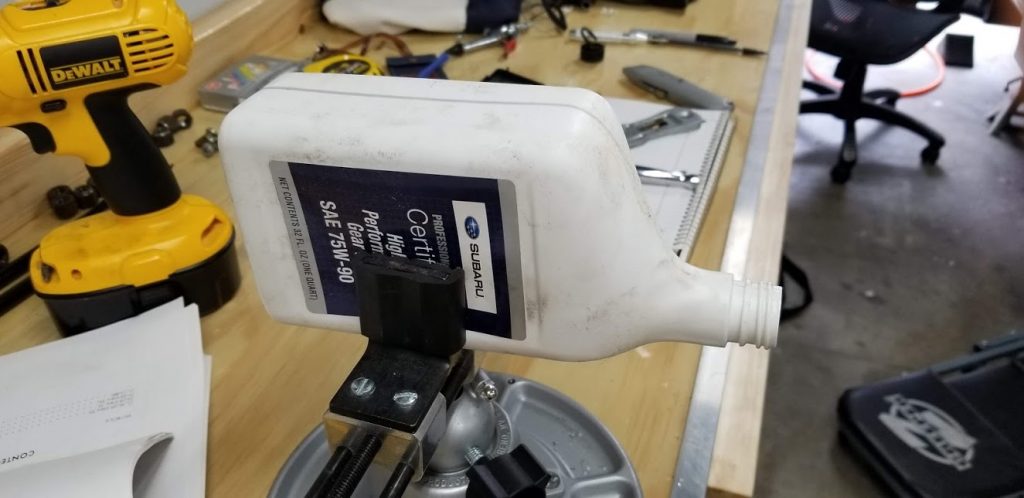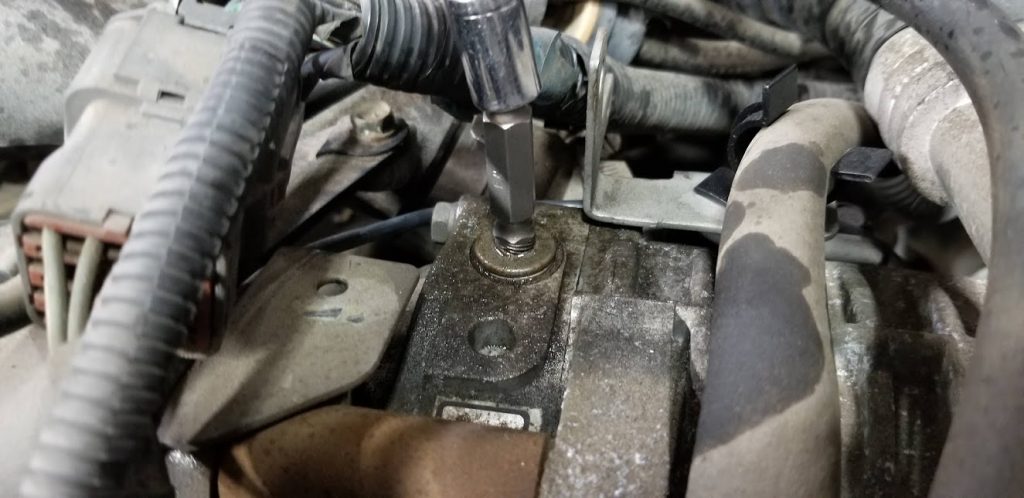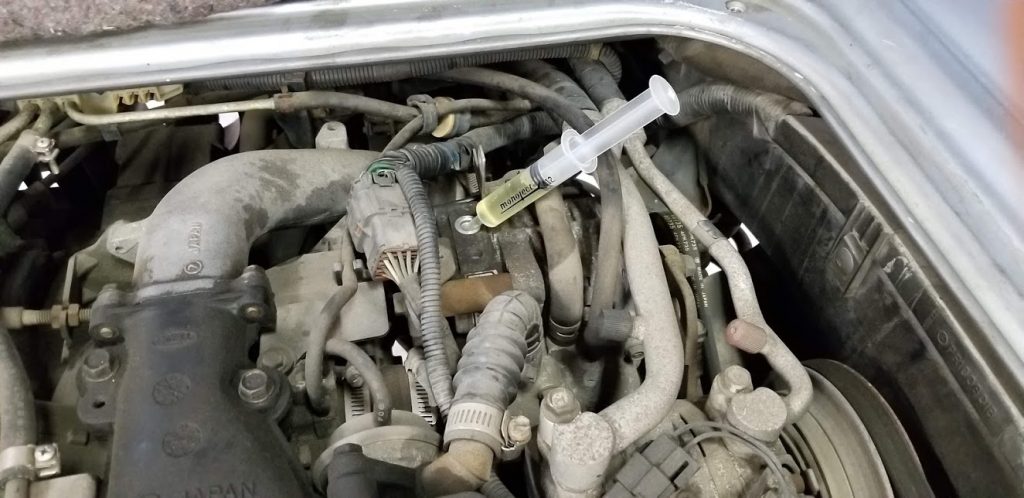The supercharger on these vans has its own separate oil reservoir, which only holds about 20 cc of oil. As soon as I learned about this, I decided to check on the supercharger oil.
Locating the fill plug was relatively easy. It’s a socket head bolt right on top of the supercharger, which is in the front right quadrant of the engine bay.
Locating the dip stick was trickier. It’s a hex head bolt with an extended tip that has markings for min and max fill. I eventually located it to the left of the fill plug, hidden under some bracketry that I didn’t want to remove. I was able to get a 3/8 drive socket on it using a U-joint attachment and ratchet wrench, and broke it loose easily.
Unfortunately, the oil level was extremely low, well below the low mark. I am honestly kind of surprised that the thing still works. I am sure there is some damage from running with low oil for who knows how long, but what’s done is done, and short of replacing the whole unit, topping it up with some fresh oil is the next best thing.
Having identified that the oil was low, I then had to figure out what kind of oil to add and where to get it. The James Danko service manual says to use “Shell MSC oil,” where “MSC” stands for “mechanical supercharger.” This oil has not been in production in ages, though, and learning enough about it to figure out a true 100% like-for-like alternative proved virtually impossible.
In the end, I settled on using some Subaru “Extra-S” gear oil, which I use in the manual transmission of my 2002 WRX, mainly because I had part of a bottle left over from my last fluid change, but also because then I’d at least have the peace of mind knowing that I was using a Subaru-branded product.
Since originally writing this post, some helpful folks have offered suggestions for better choices for supercharger oil. One is GM Parts # 12345982, which appears to be readily available in the US. The other is Toyota MSC oil, which may be just as tough to come by as Shell MSC oil.

Adding the oil was a bit of a challenge. I first had to get the fill plug out. The hex socket on the plug stripped out immediately as I tried to loosen it. So, I sprayed some PB Blaster penetrating oil on it and let it sit for an hour or so. Then, I used a propane torch to heat it up for ~10 seconds. Finally, I used a damaged screw removal tool in conjunction with a ratchet wrench to break the plug loose. Before you try to remove this plug I recommend at the very least applying some penetrating oil and giving it time to soak in, at least an hour, and even overnight if you’re patient. Applying some heat before trying to remove it would also be smart.

To add the very small amount of oil needed, I used a small syringe I had laying around — I think it was from when I got my wisdom teeth out many years ago. Something like this would work. I had to add almost 15 mL to get it up to the max mark, and I think I even filled it a bit too much. The dip stick is dark and it’s tough to see the wet oil on it clearly.

Finally, I reinstalled both the dip stick and fill plug. To tighten the fill plug, I gripped it around its outer rim using a pair of vise grips and tightened it firmly by hand. Hopefully I won’t ever have to remove it again.